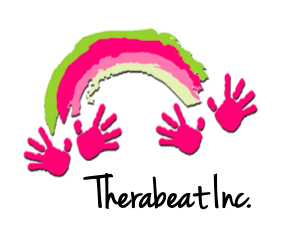My name is Amanda Brennen and I am so excited to be interning at Therabeat! Serving the community and music have always been two very big passions of mine. Having grown up in Roswell, GA, I’ve been lucky enough to see the positive impact that Music Therapy has made on my hometown. My primary instruments are voice and piano, but I also love to play guitar and ukulele. Sometimes I will even pick up an accordion or keytar and play around! I will be graduating in December 2020 from Georgia College & State University. Go Bobcats! I was very involved on campus, and I loved connecting with so many people and making a difference in Milledgeville.
GCSU provided me with the opportunity to work with many different populations in different settings. One of my favorite experiences was working in a Pre-K class with 20 children between the ages of 3 and 5. Working with this classroom for an entire school year was a treat, and it was so exciting to look at the progress that was made during that time. I was even able to go on a few field trips with them! Another great experience I had was working in a nursing home with a woman who had her own poetry book. Through music therapy interventions, we transformed her beautiful compositions into music! This process was very rewarding. I also was given the opportunity to be a guest lecturer at GCSU and present my research about music therapy and PTSD. GSCU and the Milledgeville community will always have a special place in my heart. My biggest takeaway from my collegiate experience is that we are all “More alike than different”.
My first visit to Therabeat was when the Woodstock location opened and I was very drawn to the welcoming environment. Therabeat is unique because the therapists are able to co-treat with the physical therapists, speech and language pathologists, and occupational therapists. This appeals to me because one day in the future, I would like to open up my own private practice and possibly integrate co-treating. Therabeat also gives me the opportunity to work in different settings with different populations. Therabeat is a place I know I will grow into a well-equipped professional. I am so excited to learn from such a talented group of music therapists.
Sometimes change can be scary, and my first week at Therabeat was definitely not what I expected – it was bigger and better than what I could have imagined! The music therapists are so helpful with any and all questions that pop up. They even come to the rescue when you accidentally set off the building’s alarm! The entire team wants you to succeed, and will make sure you are being pushed to become the best music therapist you can be. This week I helped with summer camp and was able to observe many different sessions. Week one also reminded me that as a music therapist, you have to be very “go with the flow” because things can and do change very often. I know I am going to learn and grow both professionally and personally so much over the next few months. I am so excited for the adventure ahead!
-Be kind to one another. Until next time!
Amanda Brennen, Music Therapy Intern








